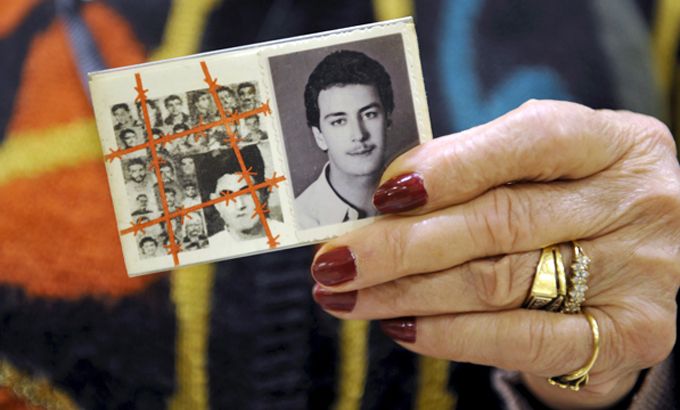
Lebanon: What lies beneath
Why is the fate of thousands who disappeared during the Lebanese civil war still unsolved?
Twenty years on from the end of the Lebanese civil war, Rageh Omaar asks why there are still question marks over the fate of those who disappeared during the 15-year conflict.
Civil movements representing families of an estimated 17,000 Lebanese missing since the war, as well as repentant former fighters and a fledgling secularist movement are all breaking the silence on civil war wrongs.
They are pushing the boundaries of the sectarian old order and asking whether the future could hold a Lebanon free from the dangers of institutionalised religious affiliation.
Fragmented foundations
The war started in 1975 and was actually a series of conflicts, which drew in Palestinian and Lebanese armed sects, the Lebanese Army, Syria, Israel, and ultimately Lebanese civilians.
The spark was a Christian militia attack against Palestinians, igniting a prolonged feud between the many Lebanese sects.
Civilians – armed or not – were caught in crossfire. Around 200,000 were killed, and many others – from a cross-section of Lebanese society – simply disappeared.
Wadad Halwani, an activist who embodies the call for post-conflict truth and reconciliation, is the head of the Committee of Families of Kidnapped and Disappeared in Lebanon, an organisation lobbying the government for answers.
“All we’re doing is asking the authorities to admit that we have the right to know what happened to our loved ones, and to work on setting up a mechanism to find out what did happen,” he says.
Shortly after the Taif Accord that ended the conflict was signed in 1989, an Amnesty Law was passed, which effectively swept the notion of justice for war crimes committed during that period under the carpet.
Justice was forsaken in the name of national reconciliation and peace.
“Basically our case hasn’t been solved because the people responsible for the war – who gave the orders to kill, and kidnap, and destroy, and stop people because of their identity – just swapped their militia uniforms for business suits and became government officials,” Wadad told Al Jazeera.
This, coupled with a fear that exhuming and identifying bodies from the many undeclared mass graves around Beirut might trigger more sectarian violence, is the crux of the problem for many of the activists and relatives waiting for answers they fear will never come.
The Rageh Omaar Report: Lebanon: What lies beneath can be seen from Wednesday, October 20, at the following times GMT: Wednesday: 1900; Thursday: 1400; Friday: 0300; Saturday: 1900; Saturday, Oct 30: 0300; Sunday, Oct 31: 1900.